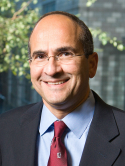Efficacy of conventional monitoring techniques in free tissue transfer: An 11-year experience in 750 consecutive cases Journal Article
| Authors: | Disa, J. J.; Cordeiro, P. G.; Hidalgo, D. A. |
| Article Title: | Efficacy of conventional monitoring techniques in free tissue transfer: An 11-year experience in 750 consecutive cases |
| Abstract: | Conventional free flap monitoring techniques (clinical observation, hand-held Doppler ultrasonography, surface temperature probes, and pinprick testing) are proven methods for monitoring free flaps with an external component. Buried free flaps lack an external component; thus, conventional monitoring is limited to hand-held Doppler ultrasonography. Free flap success is enhanced by the rapid identification and salvage of failing flaps. The purpose of this study was to compare the salvage rate and final outcomes of buried versus nonburied flaps monitored by conventional techniques. This study is a retrospective review of 750 free flaps performed between 1986 and 1997 for reconstruction of oncologic surgical defects. There were 613 nonburied flaps and 77 buried flaps. All flaps were monitored by using conventional techniques. Bath buried and nonburied flaps were used for head and neck and extremity reconstruction Only nonburied flaps were used for trunk and breast reconstruction. Buried flap donor sites included jejunum (n = 50), fibula (n = 16), forearm (n = 8), rectus abdominis (n = 2), and temporalis fascia (n = 1). Overall flap loss for 750 free flaps was 2.3 percent. Of the 77 buried flaps, 5 flaps were lost, yielding a loss rate of 6.5 percent. The loss rate for nonburied flaps (1.8 percent) was significantly lower than for buried flaps (p = 0.02, Fisher's exact test). Fifty-seven (8.5 percent) of the nonburied flaps were reexplored for either change in monitoring status or a wound complication. Reexploration occurred between 2 and 400 hours postoperatively (mean, 95 hours). All 44 of the salvaged flaps were nonburied; these were usually reexplored early (<48 hours) for a change in the monitoring status. Flap compromise in buried flaps usually presented late (>7 days) as a wound complication (infection, fistula). None of five buried flaps were salvageable at the time of reexploration. The overall salvage rate of nonburied flaps (77 percent) was significantly higher than that of buried flaps (0 percent, p < 0.001, chi-square test). Conventional monitoring of nonburied free flaps has been highly effective in this series. These techniques have contributed to rapid identification of failing flaps and subsequent salvage in most cases. As such, conventional monitoring has led to an overall free flap success rate commensurate with current standards. In contrast, conventional monitoring of buried free flaps has not been reliable. Failing buried flaps were identified late and found to be unsalvageable at reexploration. Thus, the overall free flap success rate was significantly lower for buried free flaps. To enhance earlier identification of flap compromise in buried free flaps, alternative monitoring techniques such as implantable Doppler probes or exteriorization of flap segments are recommended. |
| Keywords: | microvascular surgery; microsurgery; circulation; probe; transplants; transfers; doppler blood-flow; surface-temperature recordings; free muscle; free-flap transfers; flowmeter |
| Journal Title: | Plastic and Reconstructive Surgery |
| Volume: | 104 |
| Issue: | 1 |
| ISSN: | 0032-1052 |
| Publisher: | Lippincott Williams & Wilkins |
| Date Published: | 1999-07-01 |
| Start Page: | 97 |
| End Page: | 101 |
| Language: | English |
| ACCESSION: | WOS:000080936400013 |
| PROVIDER: | wos |
| PUBMED: | 10597680 |
| Notes: | Article; Proceedings Paper -- Annual Meeting of the American-Association-of-Plastic-Surgeons -- MAY 17-20, 1998 -- MONTREAL, CANADA -- Source: Wos |
Citation Impact
Related MSK Work





